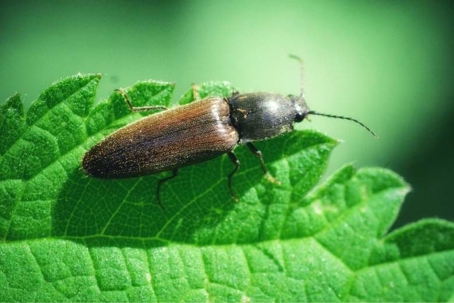What Do Click Beetles Eat?
Click beetles, belonging to the family Elateridae, have different feeding habits depending on whether they are in the larval or adult stage. The diet of these beetles varies significantly between life stages:
Larvae (wireworms):
Primarily feed on roots, seeds, and underground stems of plants.
Many species are agricultural pests because they attack crops like corn, potatoes, wheat, carrots, and other root vegetables.
Some wireworms also feed on decaying organic matter in the soil, contributing to decomposition.
Adults:
Adult click beetles generally feed on plant material, such as leaves, flowers, or nectar, though some may not feed much at all.
Their feeding tends to be minor compared to the larval stage; they are rarely considered major pests in this stage.
Wireworms are the main feeding stage and agricultural concern, eating roots and underground plant parts, while adults mostly graze lightly on plant material.
Do Click Beetles Eat Plants?
Yes, but it depends on the stage of the beetle.
Larvae (wireworms): These are the main plant eaters. They live in the soil and feed on roots, seeds, and underground stems of various plants. They can seriously damage crops like potatoes, corn, carrots, wheat, and other vegetables, making them a major agricultural concern.
Adults: Most adult click beetles feed very little and usually only nibble on leaves, flowers, or nectar. Some species may not feed much at all during the adult stage, so their impact on plants is minimal compared to the larvae.
Click beetle larvae do eat plants extensively, but click beetle adults generally do not cause significant plant damage.
What Plants Do Click Beetles Eat?
Click beetle larvae, known as wireworms, are the stage that causes the most plant damage. They are subterranean feeders, targeting roots, seeds, and underground stems. Certain crops and plants are especially vulnerable:
Highly susceptible crops:
Root vegetables: potatoes, carrots, beets, turnips, radishes
Cereal crops: corn (maize), wheat, barley, oats, rye
Legumes: beans, peas, alfalfa
Tubers and bulbs: onions, garlic, and similar storage crops
Other susceptible plants:
Seedlings of various vegetables (lettuce, cabbage, spinach) can be attacked as wireworms chew on emerging roots.
Turfgrass and pastures may also be damaged, as larvae feed on grass roots.
Feeding patterns:
Wireworms prefer young or germinating plants, where roots are tender.
Damage is often more severe in cool, moist soils, which favor wireworm activity.
Adult click beetles generally do not pose a serious threat to plants, feeding only lightly on leaves or nectar.
Do Click Beetles Eat Insects?
Adult click beetles generally do not eat insects. Most are herbivorous or feed very little as adults, consuming plant material like leaves, flowers, or nectar, and some may not feed at all.
The larvae (wireworms) are primarily plant feeders, eating roots, seeds, and underground stems. However, a few wireworm species are known to be occasionally predatory, feeding on other small soil-dwelling invertebrates, such as soft-bodied insect larvae. This behavior is not common across all click beetle species and is mostly incidental rather than a main food source.
Click beetles are largely herbivorous, with occasional insect predation limited to certain larval species.

